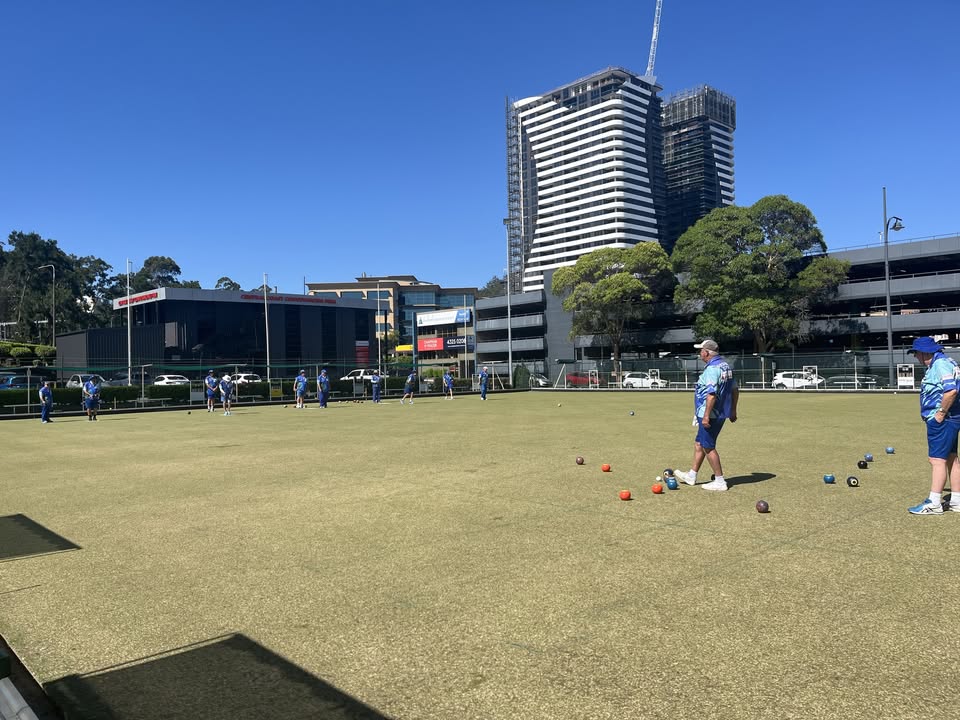The plight of Gosford Community Bowling Club, currently fighting for its future, was highlighted in a State Parliamentary hearing in February.
The hearing heard how community clubs were one of the tools in the fight against loneliness, radicalisation and misinformation, because they brought people together.
Australian Social Prescribing Institute of Research and Education (ASPIRE) Associate Professor JR Baker talked about Gosford Bowling Club while addressing the State Parliament Standing Committee on Social Issues’ Inquiry into the prevalence, causes and impacts of loneliness in NSW.
Baker said that over the past 40 years Greater Sydney had lost half of its bowling clubs – 120 clubs.
He said that on his way to the Inquiry, he drove by Gosford Bowling Club, which he called a special “third place – one of those rare places between home and work where community happens”.
“It’s where Bill Murphy, who is 91, finds his only social connection every day, after losing his wife 18 years ago,” Baker said.
“It’s where a group of stroke survivors who regained confidence and movement supported by familiar faces can grab a beer afterwards.
“It’s where deaf bowlers can turn up and know there’ll be people who understand them.
“It’s where 17 members who play are blind, the largest number of any club in Australia.
“It’s where people come from all over – from Quakers Hill and from Morisset – because this club welcomes people with a disability.
“It offers some of the only accessible greens in the region, and people with a disability are actively invited to play.”

Baker said the bowling club was a place where social capital is built.
“It’s where people from different walks of life meet, talk and form connections,” he said.
“It’s where they talk about what they have in common and avoid talking about their differences,” Baker said.
“It’s where intergenerational capital grows, older people can mentor younger people and wisdom can be shared across ages.”
Baker said it was where civic infrastructure was maintained, not in bricks and mortar but in relationships, trust and belonging.
“Yet these places keep disappearing, not because they’re not needed but because our system often values commercial returns more than civic wealth,” Baker said.
“But every lost club, every closed hall, every bulldozed gathering space is another crack in our social infrastructure.
“This cost isn’t just measured in dollars; it’s measured in the pain of loneliness, disconnection and exclusion in the people left behind when community vanishes.’’
Baker asked where people go, once these places are gone.
“Our system we live in today is designed for disconnection – often not intentionally, although a lot of people actually do it intentionally for different reasons,” he said.
“For example, it’s easier to doomscroll or gamble from a toilet seat than play with your kids.
“It’s simpler to share conspiracy theories online or stalk a stranger’s pictures than share a meal with neighbours, and it costs a lot less.
“It’s more profitable to build algorithm-driven echo chambers than create real community spaces.”
Baker said that when a community tries to rebuild, often it is hit with a wall of regulation.
“You can’t lend a neighbour a power tool without worrying about liability,” he said.
“You can’t run a street party without expensive insurance and securing a range of permissions, and you can’t start a community group without drowning in paperwork as if you’re a corporation.”
Baker said communities had been regulated into submission.
“We need to design our communities, our services, our policies and our legislation for connection,” he said.
“A community isn’t about living alongside others; it’s about creating with them.
“Right now, we’re losing that expectation that people contribute.
“The opposite of loneliness, in many ways, is having purpose and being valued, and these are inherently tied to contribution.”
He said the cost of loneliness and isolation wasn’t just lost productivity or worsening health care.
“When people feel disconnected from their communities, they become susceptible to extreme views and even radicalisation,” he said.
“When local papers close and community groups dissolve, misinformation often fills the void.
“When we lose our third places, we lose the informal connections that build democratic resilience.
“When people stop believing they matter, they stop showing up – first for their neighbours, then for their communities and then for democracy itself.”
Gosford Community Bowling Club is currently fighting for its future.
It has parted ways with Central Coast Leagues Club which used to control a lease with Central Coast Council for the bowling club to use the site.
Council has given the bowlers six months to come up with a business plan and it may sign a lease with club directly.
But in the long term, the Council has earmarked the land for sale to developers.




